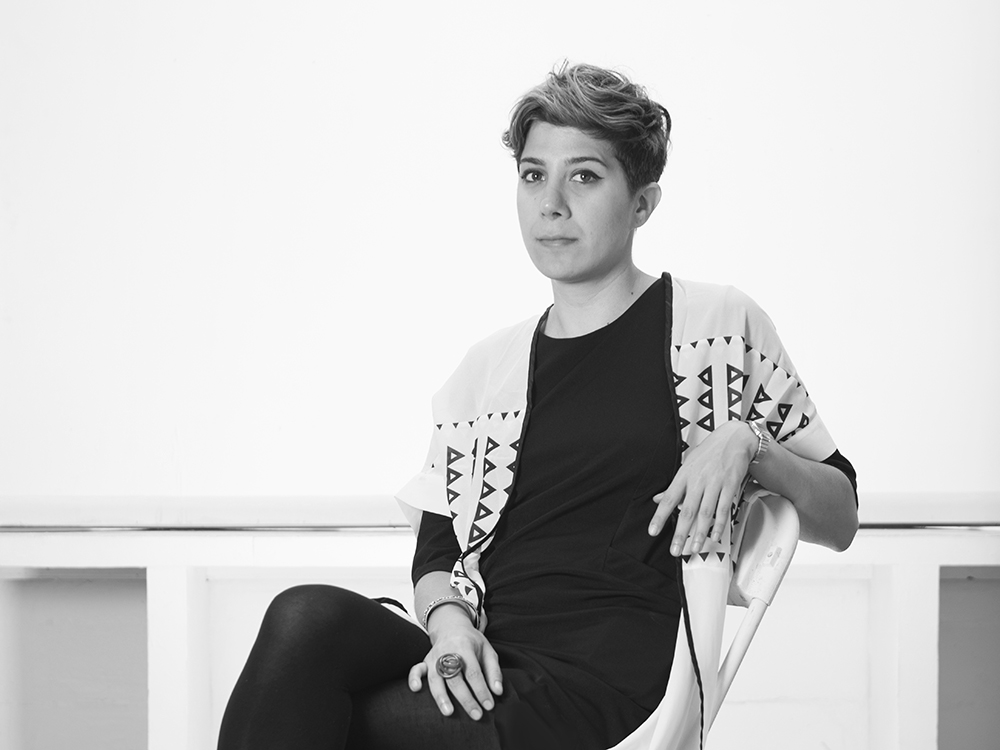Morehshin Allahyari is an Iranian-Kurdish activist, media artist, and writer based in New York. Her work addresses Western digital and technological colonialism in the context of Southwest Asia and North Africa.
“For me, being an artist means that I have the opportunity to respond to the political and social issues of my time; to practice and build platforms for micro actions, for dialogue, for interruption, and then destruction and building; and rebuilding,” Allahyari told Unthinking Photography. “It is a responsibility I take very seriously and it’s the kind of thing that I believe needs to extend outside of the art world.”
Allahyari is a 2021 recipient of the United States Artist Fellowship. She is a 2019 recipient of the Painters & Sculptors Grant from the Joan Mitchell Foundation. In 2019 she also received the New Frontier International Fellowship from the Sundance Institute.
The San Francisco Museum of Modern Art, the Whitney Museum of American Art, and the Current Museum all house Allahyari’s artworks as part of their collection.
Moreshin Allahyari explores Iranian history with art
One of Allahyari’s earlier notable works is the 3D-printed sculpture series Dark Matter (2014). Like Iranian artist Shirin Neshat, Allahyari used visual art to respond to life under the Iranian regime. The artist explored forbidden and taboo items using digital modeling and meshing.
“I was…very interested in…reclaiming all the things that were taken from me during my life in Iran or are currently being taken away from my sister, and mother, and my friends,” Allahyari explained in a Rhizome interview. “There is something very special about things that you can’t have access to when they are forced by law out of your life.”
Material Speculation: ISIS (2016) is also a 3D-printed sculpture series. Allahyari reconstructed 12 statues that ISIS destroyed in 2015. The sculptures depict selected statues from Hatra and Assyrian artifacts from Nineveh. A flash drive containing information on the artifacts resides inside each of the sculptures.
In October 2016 Allahyari began a year-long research residency at the New York-based art and technology nonprofit Eyebeam. Allahyari began She Who Sees the Unknown (2017-2021) as part of the residency. For the project Allahyari researched monstrous queer and female figures – jinn – from Middle Eastern myths. She then recreated those figures using 3D printing. The purpose of the project was to “explore the catastrophes of colonialism, patriarchism and environmental degradation in relationship to the Middle East,” as stated on her website.
“My upbringing in Iran was full of ancient mythical narratives, all involving extraordinary and supernatural beings,” Allahyari writes. “My bedtime stories of childhood, told often by my grandmother, were about her memories of encounters with jinn, usually in the public bathhouse of her village.”
Moreshin Allahyari moved to the U.S. for University
Allahyari was born in Tehran, Iran in 1985, six years after the country’s revolution. She first began working creatively in childhood.
“My discovery of the art world has been through creative writing (since the age of 12 when I started to take part in a private creative writing class in Iran that would meet weekly, which continued until I was 18) … so writing is very dear to my heart and it’s a very important part of my work,” said Allahyari.
Allahyari earned her BA in Social Science and Media Studies from the University of Tehran in 2007. She accepted an invitation shortly after to do research in art, culture, and media at the University of Denver’s Estlow Center. In 2009, she graduated from the university with her MA in Digital Media Studies.
Upon invitation, the artist then began work with Developing the Initiative for Advanced Research in Technology and the Arts (iARTA). In 2012 she received her MFA in New Media Art from the University of North Texas.
Allahyari has worked as visiting assistant professor in the Art and Technology Department at the University of Texas. Since then, she has held various adjunct positions. In Tehran, Allahyari taught English and did freelance work for art and culture publications.
Moon-faced addresses Western Technology and Gender
Allahyari’s latest project, Moon-faced, reflects on the impact of Western influences on Southwest Asian and North African culture.
Allahyari derived the exhibition’s title from Persian literature. In ancient scripts, writers used the adjective “moon-faced” to describe beauty in both men and women. Today, the word describes women only. Similarly, in Iran’s Qajar Dynasty, painted portraits followed a model of genderless youth and beauty.
“The modernization of Iran, the influence of the European tradition of realistic painting, and the use of camera technology and therefore photography as a model, overshadowed and ended the queer representation of genders that historically characterized these paintings, largely known for their gender-undifferentiation,” Allahyari writes.
To create Moon-faced, Allahyari programmed a multimodal AI model using keywords and images from the Qajar Dynasty painting archive (1786-1925). The computer generates new genderless portraits.
The ongoing project began in 2021. Mani Nilchiani composed music for the video.
Peruse the full project on Allahyari’s website at http://www.morehshin.com/moonfaced/.






